The benefits of chatbot technology are plentiful.
Thanks to a low barrier to entry, every business can mock a chatbot up in ten minutes if they so desire.
Yet—
Only some chatbots live up to the hype. The rest are bland and forgettable.
That’s why we decided to check what mechanisms make some chatbots more likable and relatable than others.
We designed two types of bots. Some gave only robotic answers, while others had personalities and appeared “human-like.” Then, we presented them to 1,000+ US consumers to learn what they thought.
This is what they told us.
Disclaimer: No chatbots were harmed in this experiment.
Key findings:
- Consumers use chatbots to solve simple queries (52%), test the chatbot’s skills at answering silly questions (18%), and avoid the stress involved in speaking with a human agent (12%).
- People are put off by too robotic chatbots (22%) or too human-like bots (16%).
- Only 21% of consumers prefer to contact human assistants.
- 16% of respondents said they had little exposure to chatbots.
- 74% of consumers want the chatbot to introduce itself at the start of the conversation.
- 77% of consumers want to know what the chatbot can help them with before starting the conversation.
- 56% of respondents think chatbots can have limitations.
- Brands’ positive perception is influenced by the way chatbots reply to unrelated questions. As many as 53% of consumers build positive associations around brands whose bots use quick-witted comebacks. Robotic replies, such as “Sorry, I didn’t get that,” positively influence only 38% of consumers.
- If the interaction with a chatbot goes smoothly, 73% of consumers are likely to convert.
- If the bot successfully clarifies what the user wants after initial confusion, only 5% of consumers are dissatisfied with the interaction.
- About 47% of respondents close a chat window after a bot gave them two repetitive answers. The number drops to 28% if a bot attempts to clarify the issue.
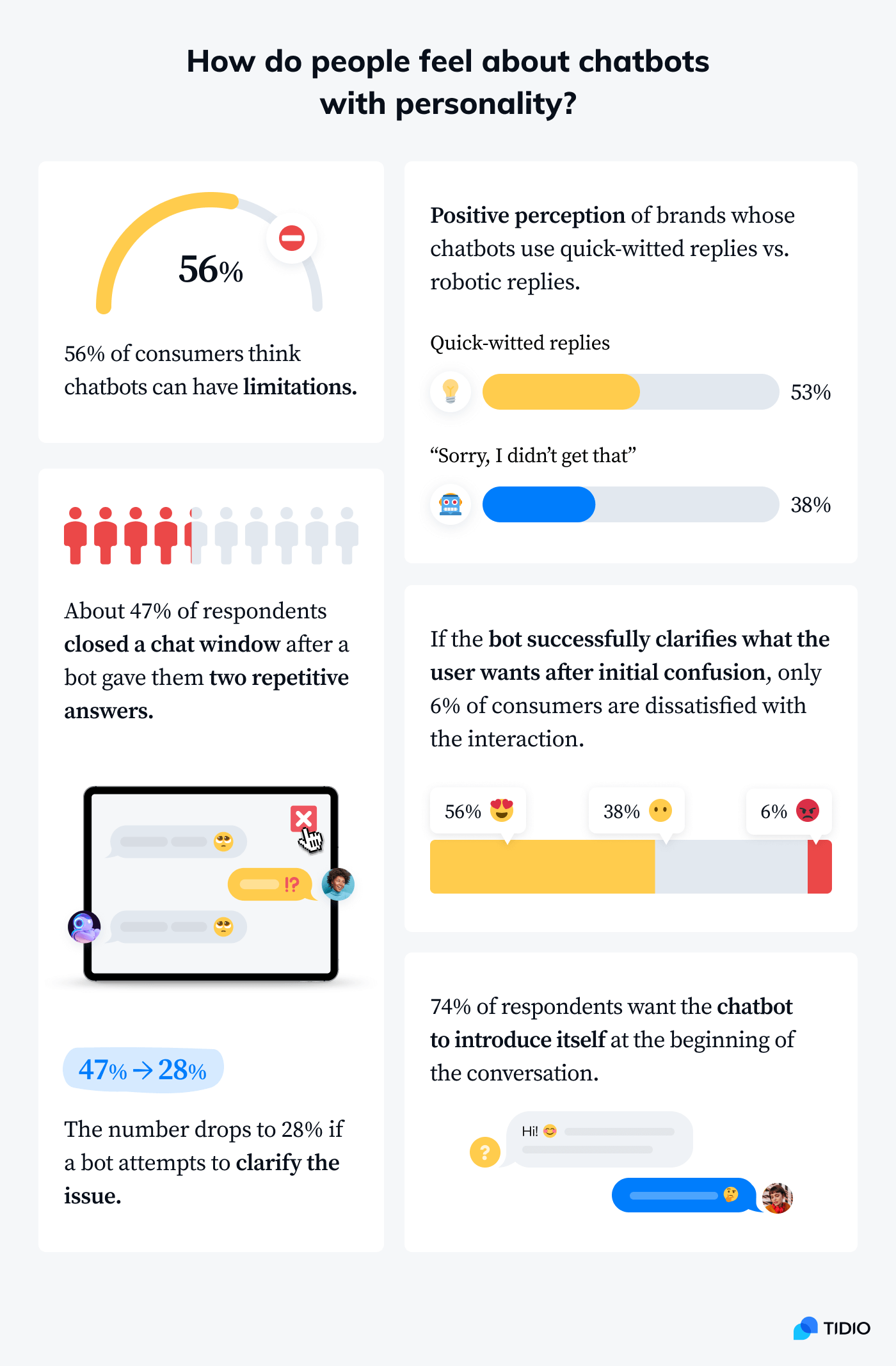
What makes a successful chatbot?
To answer this question, let’s move back in time a little—
One of the first modern chatbots that humans interacted with was SmarterChild.
It was designed to find answers to users’ questions about sports or the stock market on the internet.
SmarterChild’s creator said in an interview that he wanted it to be successful, to pitch the concept to corporations as a means of automated customer service.
He believed a successful chatbot was the one that people want to use.
So he programmed it to have a “personality,” and respond with funny, sad, or sarcastic comments.
For example, if you swore at it, it wouldn’t talk to you until you apologized. Just like a human would.
How did SmarterChild do?
In its heyday SmarterChild chatted with 250,000 people daily—back in 2000, when there were fewer internet users than Facebook users today, it was quite a feat.
What’s in it for businesses?
According to Accenture Research on Conversational AI Platforms, 57% of businesses agree chatbots deliver large ROI with minimal effort.
What is more, a study by Juniper Research projected that companies can save up to $0.70 per customer-chatbot interaction.
So by increasing the number of interactions, businesses can both boost revenue and cut costs.
Learn how to automate your customer service using personalized AI
But what is a “chatbot personality?”
A chatbot is a software application with varying intelligence designed to simulate human conversation.
It can be programmed to display any human-like characteristics. All you have to do is choose the words and utterances you want it to use.
And the choice of words will play a vital role in shaping the chatbot’s perceived “personality.”
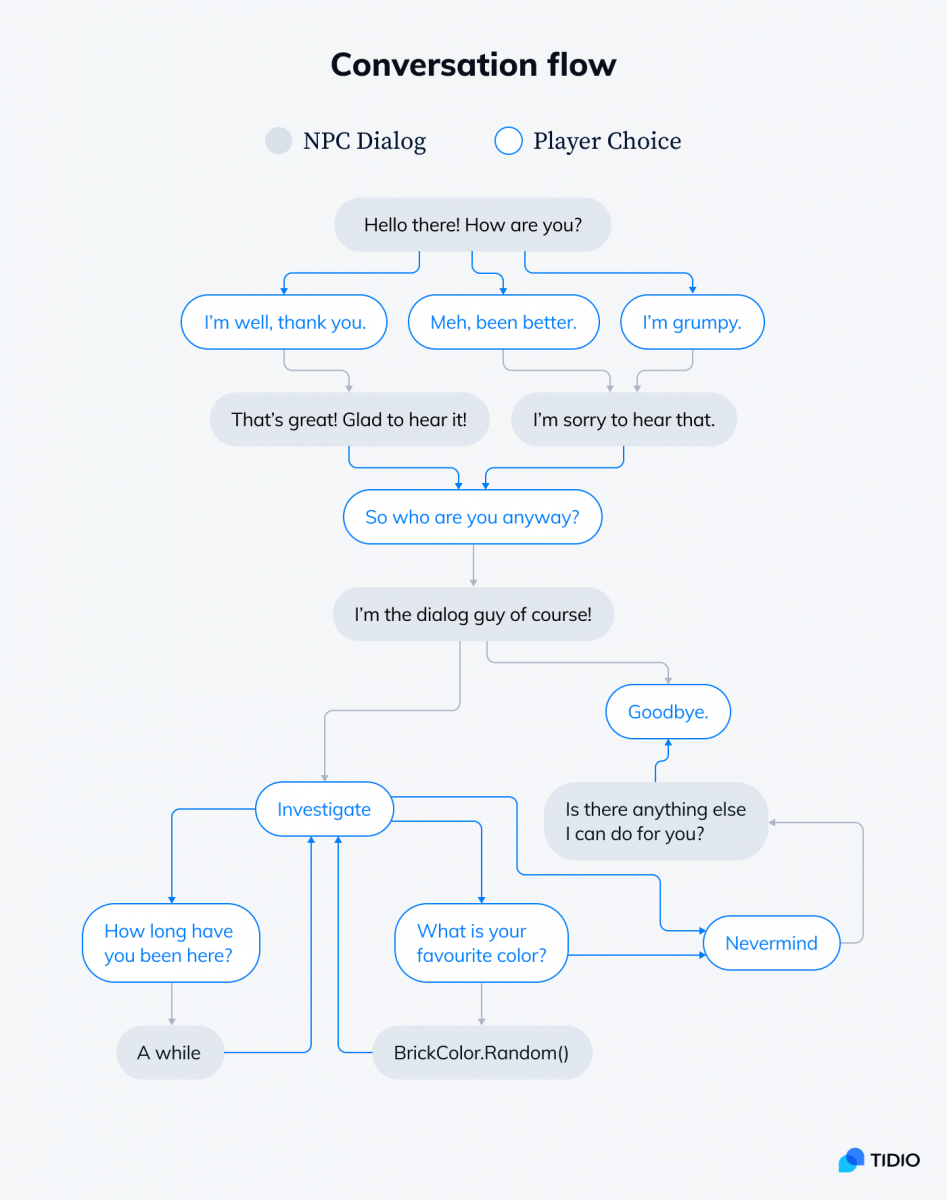
Can chatbots be likable?
The lifetime research by Clifford Nass, a professor of communication at Stanford University, suggests that interaction with robots activates the same social brain areas as a conversation with a fellow human.
Without going full academic—
The human brain is ready to perceive robots as social partners. And if that’s the case, adding a human touch to a chatbot’s responses will resonate with people better than machine-like responses.
Chatbot’s performance vs. personality debate
When building chatbots both research and practice stress the importance of prioritizing a bot’s performance (giving instant answers to users’ questions) over its personality.
After all, does a chatbot need a personality to handle basic FAQs?
Well, our study suggests that an overly robotic and cold-sounding chatbot can put users off, even if it has impeccable functionality.
In fact, 22% of respondents in our survey admitted the main reason against using chatbots more often is that chatbots’ answers seem too robotic to be engaging.
In comparison, only 11% of respondents are discouraged by chatbots’ silly or inappropriate answers.
In other words, robotic answers offered by robots are twice as discouraging as silly answers.
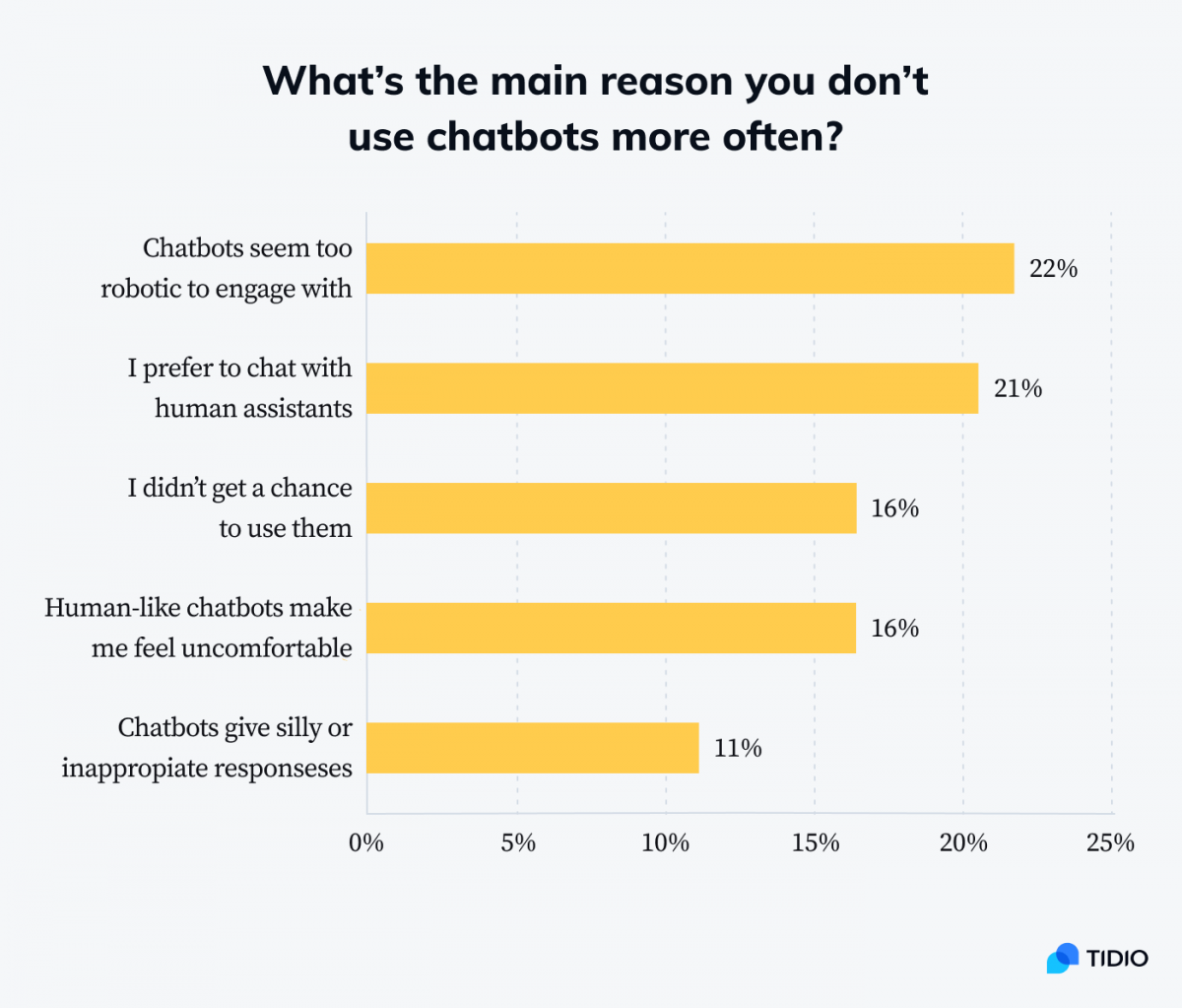
Wait, there’s more—
The majority of respondents in our survey (56%) accepted the fact that chatbots can have limitations, or may not understand human emotions (“it’s a bot”, “I’ll cut it some slack”).

To err is human—as the proverb goes.
But it looks like humans (or at least half of them) are ready to anthropomorphize chatbots and let them make mistakes.
But if you’re designing chatbots with Gen Z in mind, however, they are a tough crowd.
You need to get the balance between the robot’s functionality and personality just right to please them—25% of them said human-like chatbots make them cringe, and another 25% feel the same about chatbots that sound too mechanical.
In the next section, we’ll look at ways of preventing, otherwise functional chatbots, from frustrating users with their I’m-a-robot-kind-of-speech.
When’s a good time to display a chatbot’s personality?
Today, chatbots are meant to be useful and efficient. But to make your chatbot stand out and appeal to your target audience, it has to know how to break the ice with a few jokes.
Let’s see what our survey reveals about the best time to show off the chatbot’s inner self.
Starting a conversation and introducing itself
What’s a better way to show your personality than to introduce yourself? Will it be “Howdy”, “Sup”, or “Good morning?”
As many as 74% of respondents want to know if they are talking to a chatbot or customer rep before engaging in the conversation. So instead of disguising your bot as a human agent, or leaving it for users to figure out, let the bot introduce itself.
Apart from creating a bot persona, it’s also a good idea to let the bot explain to the users what tasks it can help them with. After all, a whopping 77% of users actually expect that.
It will certainly help avoid frustration when users try to elicit information the bot doesn’t know.
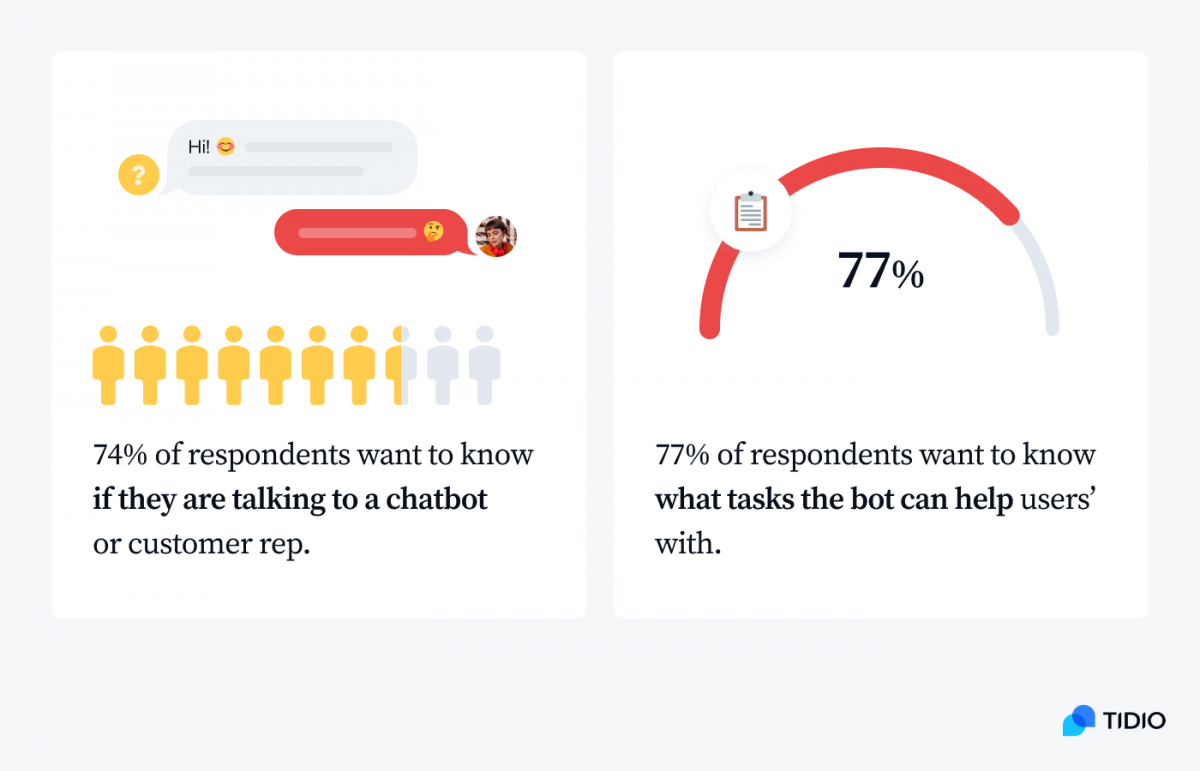
Moving on—
A study comparing human-human interactions to human-chatbot interactions found that people tend to send shorter messages and use a less complicated vocabulary when they know that the recipient is a machine, not another human.
If people adapt their messages to the bot recipient in this way, it’s easier for a chatbot to understand the issue and help.
Responding to off-topic questions
Small talk is a way people bond. So it’s unavoidable for humans to ask a chatbot off-topic questions.
Nearly 18% of participants in our study, who interact with chatbots regularly or often, admitted they like to test chatbots’ answers for silly or complex questions.
It creates an excellent opportunity to reinforce the bot’s personality, create memorable experiences, and add uniqueness to the bot.
Brands that can smuggle emotion and personality in chatbots’ quick-witted comebacks to unrelated questions are seen in a positive light by 15% more consumers than those that offer simple, robotic replies, such as “Sorry, I didn’t get that”.
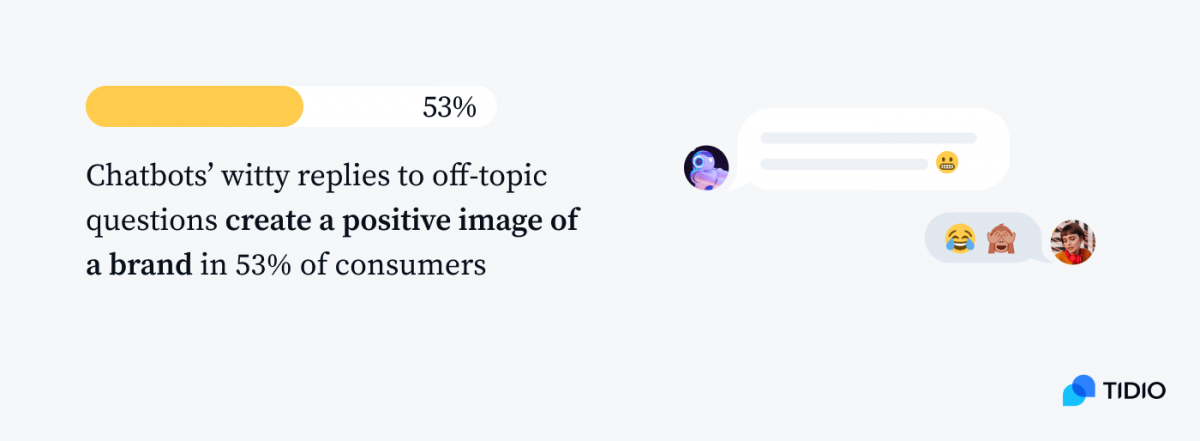
However, be mindful of the values your company stands for while writing scripts for your chatbot. We’ve seen the impact of answers to unrelated questions on brands’ perception when Apple and Amazon came under fire for Siri and Alexa’s responses to gendered expletives hurled at them.
Understanding the context to give the right answers
Over a half of consumers who use chatbots regularly or often do so to get accurate answers to simple and moderately complex queries.
If you give your chatbot a conscientious and agreeable personality so it understands questions and replies to them appropriately, you can expect more than 70% of users will complete an action (e.g. book an appointment or place an order).
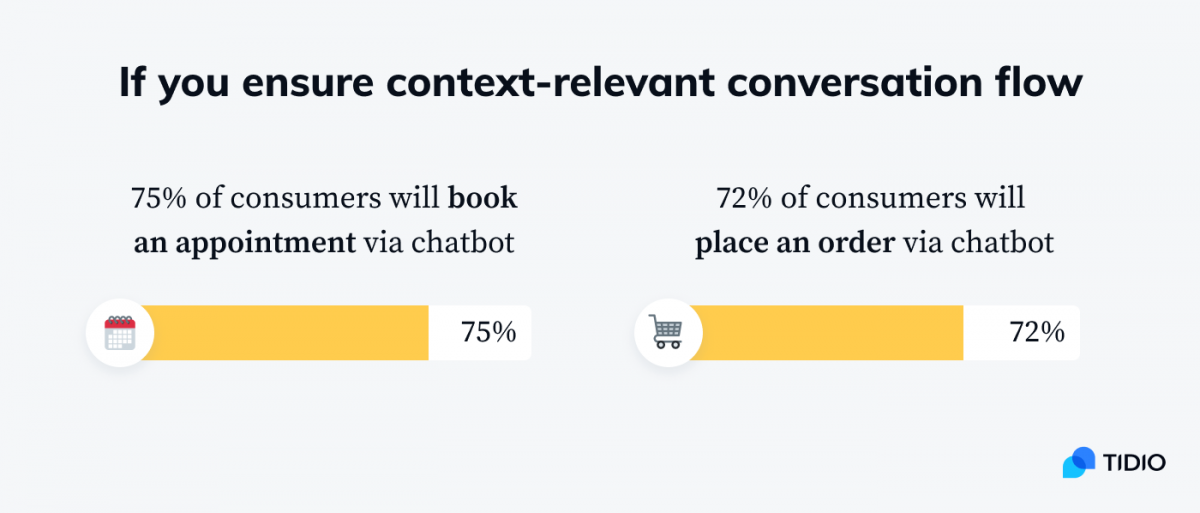
In our study, the biggest obstacle to booking the appointment for the rest of the users was the limited choice of time slots offered by the bot. They thought they would be able to find a more suitable time and date in person.
Respondents who didn’t want to place an order using a chatbot mentioned inability to compare prices and expressed preference towards browsing the website to see all types of products.
Failing to understand the context
If chatbots don’t provide the right response at the right time, 75% of people tend to get frustrated just like they would with a human.
At this point, a distinctive personality is of little help.
We tested consumers’ reactions to incorrect answers provided by a deadpan bot and another with a peppy personality. The replies given by the latter were only 3% less frustrating and 1% more enjoyable than the former.
What if a chatbot encounters ambiguous utterances but can ask the user for clarification?
Funny you should ask. We tested that, too.
Avoiding repetitive responses
Enable your chatbot to recognize when the interaction gets too confusing. Whatever you do, do not let the chatbot use the same responses over and over.
I can’t think of a more robotic thing to do.
I can’t think of a more robotic thing to do.
I can’t think of a…
Sorry, I couldn’t help myself. 🤖
Nearly half of the respondents in our survey seem to agree with me on this.
Two repetitive responses were enough to put off 47% of participants in our study, that is, close the chat window to avoid being stuck in the conversation loop.
In comparison, if a bot tries to clarify unforeseen questions, 72% of people we questioned were willing to give the bot a second chance and continue the conversation.
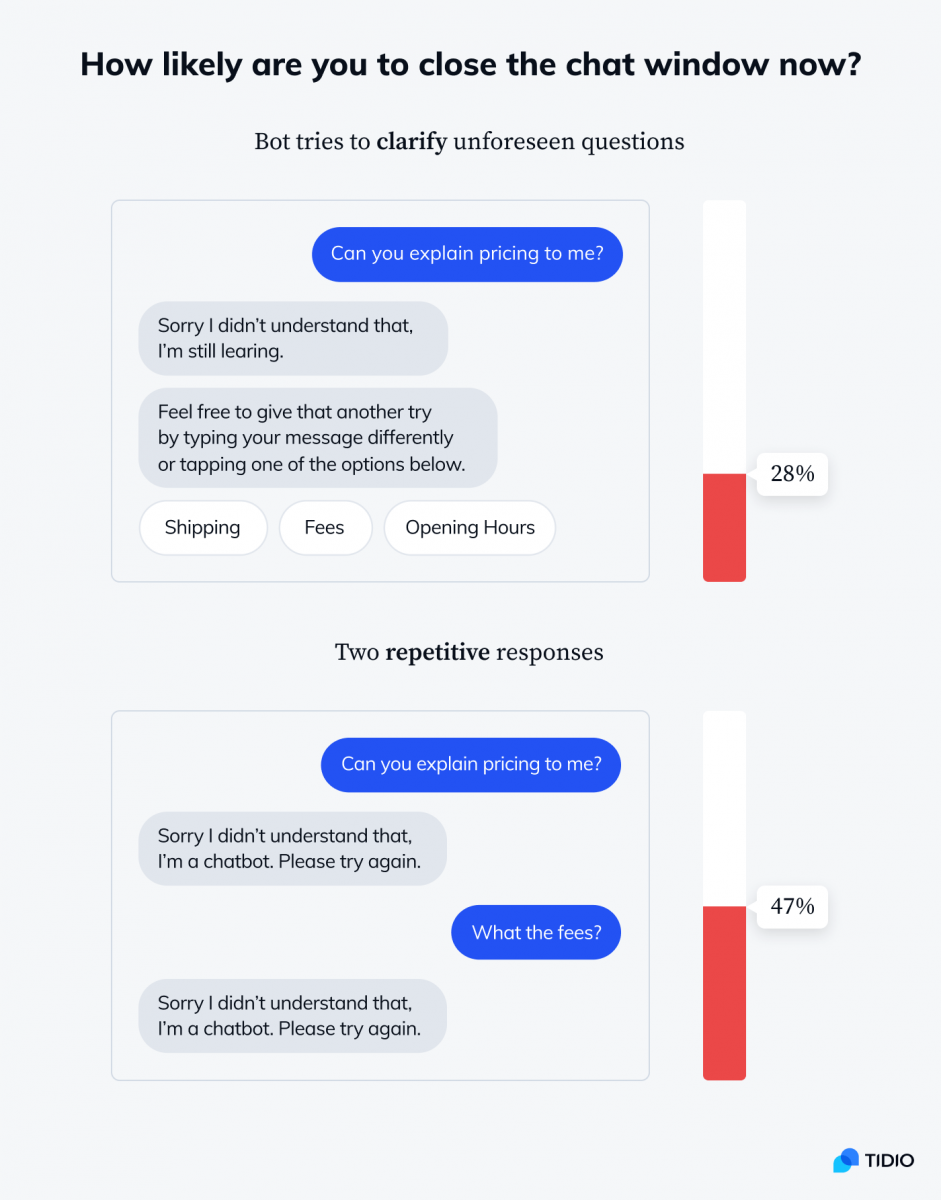
Clarifying ambiguous questions
In another example, in which a bot successfully clarified what the users said after initial confusion, only 5% of people were unhappy with the interaction (on a 10-point scale they rated it between 1 to 4).
The majority of them appreciated the bot’s perceptiveness (24%) and showing interest in them (20%) before getting the job done (18%).
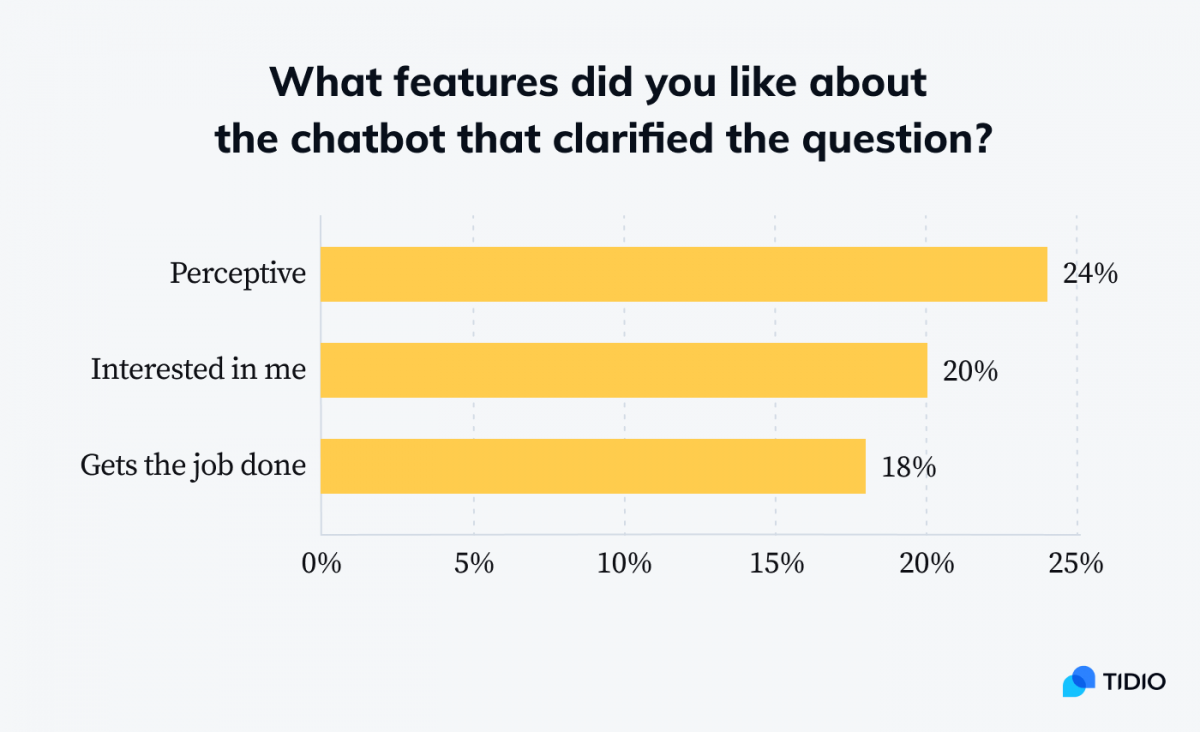
Being polite
When we removed from the chatbot’s script expressions displaying kindness and respect expected in normal human-human social and business situations (like “please” and “thank you”), only 15% of respondents rated the experience negatively (between 1–5 on a 10-point scale).
The comments section, however, revealed that the respondents felt something was off but they weren’t quite able to put their finger on it. Some of their comments were:
- I didn’t feel there was enough of a conversation for me
- Unhuman-like
- Doesn’t provide a good retail shopping experience
- Too impersonal
- If you’re going to be so cold, don’t even pretend to be an AI. Just show me the menu you truly are.
- It just seemed plain (…) like a machine
- I did not like the overall vibe of the interaction
- I guess it’s straight to the point…
Can bots become new brand mascots?
Or can brand mascots become bots?
As a bonus question, we asked participants which brand characters they would like to see made into a chatbot.
As many as 91% of respondents in our study were totally into the idea. Considering that 7% of them said they don’t use chatbots and 35% used them only a few times, it shows a remarkable willingness to engage with made-up bot characters.
To design a brand mascot you need to choose its personality, think of its appearance, poses, reactions, and so on. If a brand mascot can be brought to life through a chatbot, it can equally help increase brand recall.
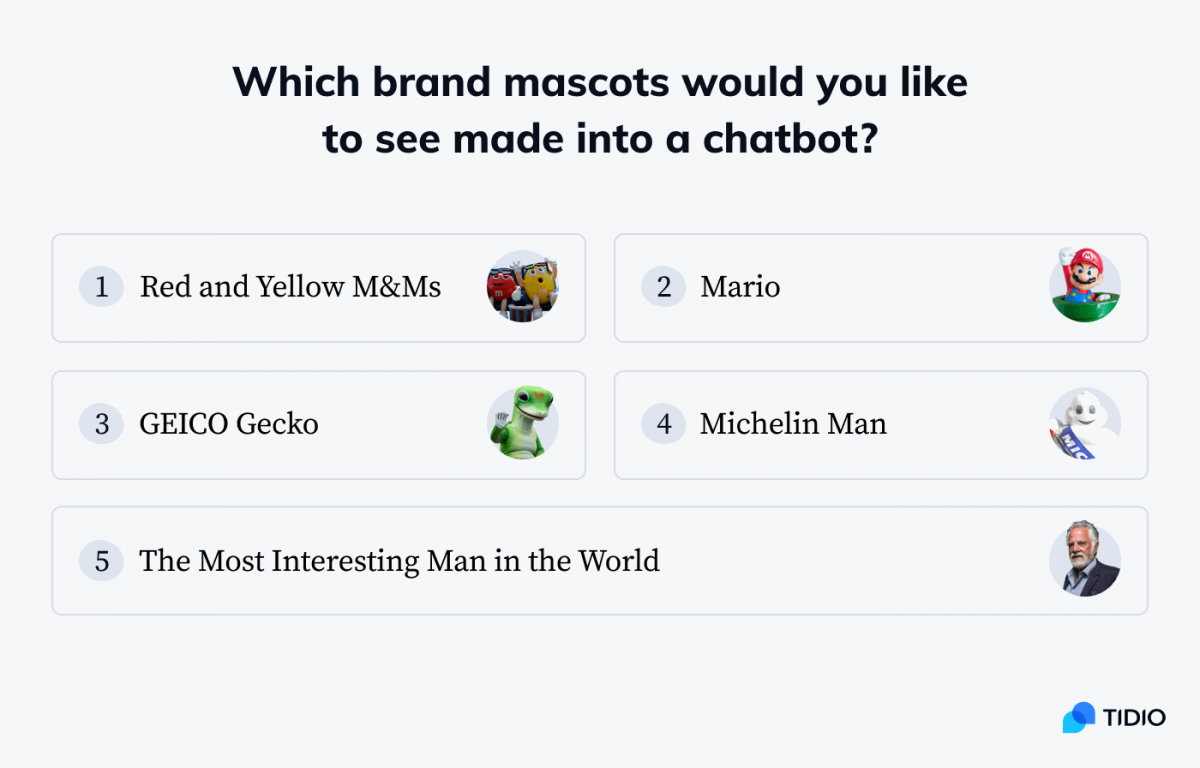
Final thoughts and conclusions
Chatbots’ bug-free and efficient performance ensures they serve their primary purpose. Giving a chatbot a unique personality is what turns a neutral, functional interaction into a positive, memorable brand experience.
People are inclined to use chatbots with human-like characteristics more often. And companies can hone chatbots’ personalities to engage users more and generate revenue.
The best way to leverage a chatbot’s personality is through properly introducing your bot and allowing it to engage in small talk. Bots equipped with conscientious and agreeable characteristics make users feel seen and important. Likewise, people are prone to be more tolerant of errors made by anthropomorphized bots.
Nowadays, there’s more than the technology to consider when creating a chatbot. If your bot’s personality has a consistent tone of voice as your brand, it can produce the best results for your company.
Isn’t it the time to give your bot a unique personality?
Methodology:
To conduct the survey, we collected answers from 1,002 respondents, using Amazon’s Mechanical Turk and Reddit.
Respondents were 54% males, 45.7% females, and 0.3% declaring as non-binary. Over half of the participants were aged 25 to 40, 26% of them were aged 41 to 56, 7% of them were aged 18 to 24, 6% of them were aged 67 to 65, and 4% of them were aged over 65. Any striking differences in responses between the groups are mentioned within the article.
The survey consisted of approximately 40 questions. Respondents were asked to answer scale-based or multiple-choice questions some of which included an image of a short chatbot-human interaction in a customer service setting. Additionally, we provided them with space to comment on their choices.
Resources:
- At $10 a Year Automated Buddy Loses Laughs
- Robert ‘Botfather’ Hoffer will explain the amazing success, and failure, of SmarterChild bot
- Remembering SmarterChild
- The Incredible Growth of the Internet Since 2000
- Accenture Research on Conversational AI Platforms
- Chatbots expected to cut business costs by $8 billion by 2022
- Let’s Chat Hebrew
- Professor Clifford I. Nass, expert on human/computer interactions, dead at 55
- Reeves, B., & Nass, C. I. (1996). The media equation: How people treat computers, television, and new media like real people and places. Center for the Study of Language and Information. Cambridge University Press
- Real conversations with artificial intelligence: A comparison between human-human online conversations and human–chatbot conversations
- 2017 Chatbot Report
- Apple and Amazon are under fire for Siri and Alexa’s responses to sexual harassment
Fair Use Statement:
If this article helps you better understand whether a chatbot’s personality matters or if the results of the survey are surprising, feel free to share the statistics. Just remember to mention the source and include a link to this page. Thank you!

